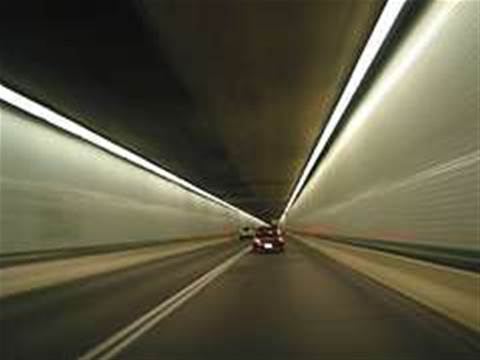In the final result only 10 percent of Australian households will connect to the NBN via wireless.
Alcatel-Lucent, a major player in fibre networks, unsurprisingly believes fixed networks are the way to go. Marketing manager Geoff Heydon says only fibre has the potential headroom to cope with increasing data loads.
"When people say just wait for LTE and we won't need fixed broadband, it's just bollocks," says Heydon. "Cost effective usage will always be far, far greater for fixed."
There are any number of metrics that demonstrate this fact; such as total data, which passed 4 exabytes in 2008. Perhaps the most impressive is YouTube, Google's as-yet unprofitable video network, which held 75 million videos at 550TB in September last year. By May those two figures had doubled.
But it is technologies not yet invented which will drive the need for greater bandwidth, says Alcatel.
The vendor's Dallas lab has a project that lets a mobile phone record video and broadcast it in real-time around the web. Amazon's e-book, the Kindle, which Heydon calls the first device to invisibly connect to the network, is also a harbinger of things to come.
The Kindle has a 3G SIM card inside that lets a user browse books wirelessly anywhere they can get a mobile phone signal. "This is just the beginning of the journey," says Heydon.
Television will keep increasing in resolution, forcing telcos to provide more bandwidth at cheaper rates. Don't get too cocky about buying the latest 1080p HD widescreen for your wall: Barco's Digital Cinema projectors displaying 2064x1080 have already hit the market, and 4096x2160 will soon follow.
The ultimate visual experience is 3D HD, which Alcatel expects towards the end of the next decade.
TV has already driven the upgrades of digital networks in places like the US where 90 percent of television is available for free over IPTV. Telcos can get away with oversubscribing households to a single exchange for browsing and downloading files because not everyone is using their connections to capacity at the same time.
However, many people watch television at the same time. Alcatel made lots of money upgrading backhaul infrastructure in the US as usage rates leapt from 50kbps a user on ADSL to 10Mbps on IPTV.
For more on the NBN, read this month's feature in the latest issue of CRN magazine.




_(11).jpg&h=142&w=230&c=1&s=1)





.jpg&w=100&c=1&s=0)
_(8).jpg&w=100&c=1&s=0)









.jpg&q=95&h=298&w=480&c=1&s=1)


